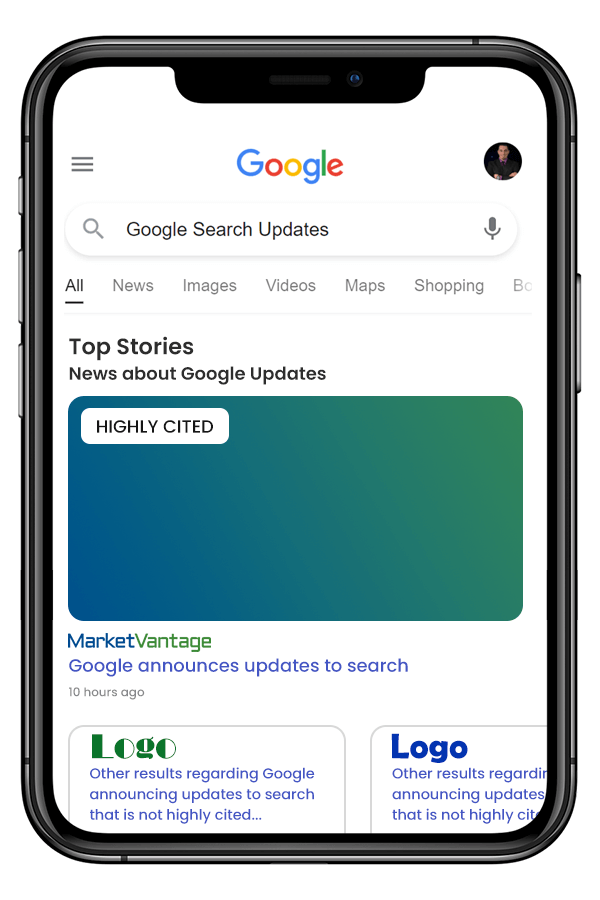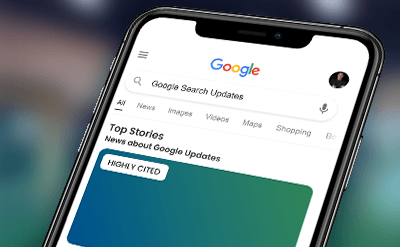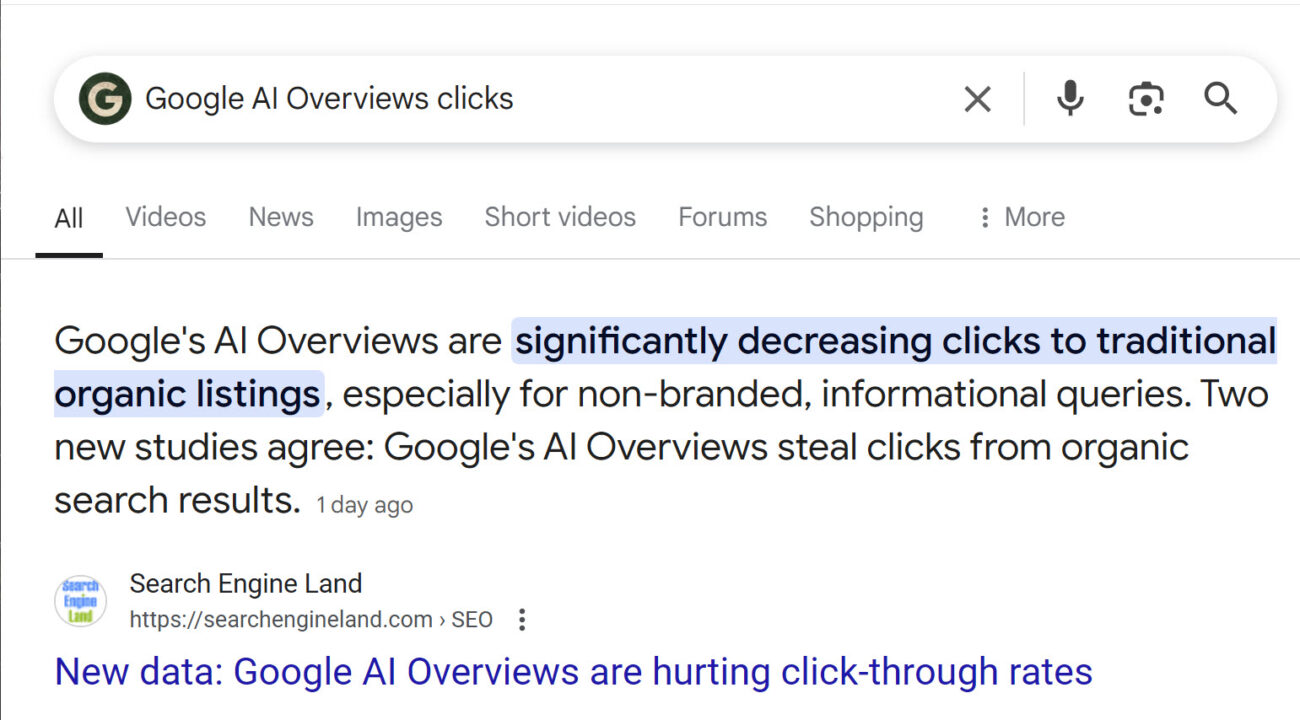“Highly Cited Labels” will be the talk of the town for SEOs in the coming weeks. As with every update Google releases, its release will be accompanied by many questions regarding how it may impact search rankings. Change naturally drives speculation on what is to come, so here is our take on highly cited labels.
What is the “Highly Cited Label”?
“Highly cited labels” can be defined as a new label used within mobile search results that elevates original reporting that is frequently cited by other publishers across the web. Articles that earn the label will be displayed larger than other results, shown before or alongside newer articles, and have a label that reads “highly cited.” In the diagram below we show an example of how this may look in search results. The general function of the “highly cited label” is to highlight original content from its initial source to allow full context and accountability. It applies to publications such as news stories and press releases.

Why has Google created “Highly Cited Labels”?
In the past few years, we’ve seen misinformation and disinformation spread more rapidly than ever before. The impacts of these falsehoods have not been overlooked. There are times when inaccurate information being spread can be humorous and harmless (insert Rick Roll), but there are other times when lives, civil liberties, and human rights are impacted. The “highly cited label” is Google’s answer to combat the weaponization of tech and prevent their platforms from becoming a catalyst for lies, whether intentional or not. Currently, they do this by calling out misinformation and disinformation directly within the search results on all of their platforms.
If you haven’t been paying attention this might seem like a new development, but for the past few years, Google has been introducing features to this effect pretty regularly. In recent elections, Google had the results of fact-checkers placed directly within search on YouTube and Google Search. This is not unique to Google as similar practices have also been adopted by other tech giants like Facebook and Twitter. Highly cited labels are the natural expansion of this initiative and are just another means to accomplish the goal.
How Will Highly Cited Labels Affect Search Results?
As with many of the updates Google makes to their search result pages, we fundamentally agree with the reasoning behind them. This update will have a profound impact on the integrity of information across the internet, and it couldn’t come soon enough. As much as we agree with the actions Google is taking on disinformation, we still need to take a step back and view the changes through the lens of a marketer. Here are 3 ways in which “highly cited labels” will affect search results:
1) Effect the Click Through Rate (CTR) of Existing Pages:
This update definitely has the potential to affect the traffic to existing publications. On any given publication on your site, if you rely heavily on external publishers or news organizations for information, those sites will get an even larger boost thanks to this update. Your site will face no penalty because of this update, but highly cited sources will certainly reduce the CTR of articles displayed after or alongside them. The opposite is also true: if your publication is highly cited, it may very well see an increased CTR thanks to the increased size and placement within SERPs, not to mention Google’s label, which will be interpreted as a recommendation and increase trust.
2) Increase the Need for Backlinks
Backlinks are one of the most important signals Google uses to weigh a site’s value. With this new update, the need for backlinks only increases. If your article becomes highly cited, you will receive the benefit of the new label and likely appear before the publishers who are linking to and citing your article as their source.
3) Drive the Creation of Original Content
Google has never tried to hide the fact that it rewards original content that is authoritative, trustworthy, and useful. With the visual upgrade and better positioning in SERPs that “highly cited” articles will receive, the need for increased utility and authority will become apparent to marketers very quickly. Backlinks are only awarded to quality publications. Original topics are hard to come by, so content writers will often put a spin on original content. If you publish an article that gives unique context and thoroughly covers a given topic, it will increase your chances of being cited as the base of someone else’s article.
What’s the Takeaway?
In conclusion, nothing new needs to be done regarding your white hat SEO strategy. If you are not a publisher, you can probably get away with paying little mind to this update. There is now a stronger emphasis on original reporting, but this has been Google’s open intention for many years; create original content that is focused and useful to your audience and you will be rewarded. If you are a publisher and you are reworking stories from other sites, now is the time to be truly transformative in your coverage. Add in as much original content and unique value to your articles. If possible, increase your output of original publications and make sure your articles pack real value for your readers. Read the full article from Google here.
Are There Other Upcoming Updates Coming to Google Search?
In addition to the “Highly Cited Label” update, there is the upcoming PaLM (pathway language model) search update. PaLM will have a significant impact on Google’s ability to translate sites from English into other languages. These translated results will be returned directly on SERPs meaning Google’s users will be able to get better answers to their questions without leaving the search result pages. Results returned will be cited but the incentive to click a result might actually decrease as Google better delivers answers directly to users. To learn more about this and future updates, listen to our Digital Marketing Mondays podcast where Devin Littlefield and Hans Riemer tackle changes in the marketing industry that you need to know.





